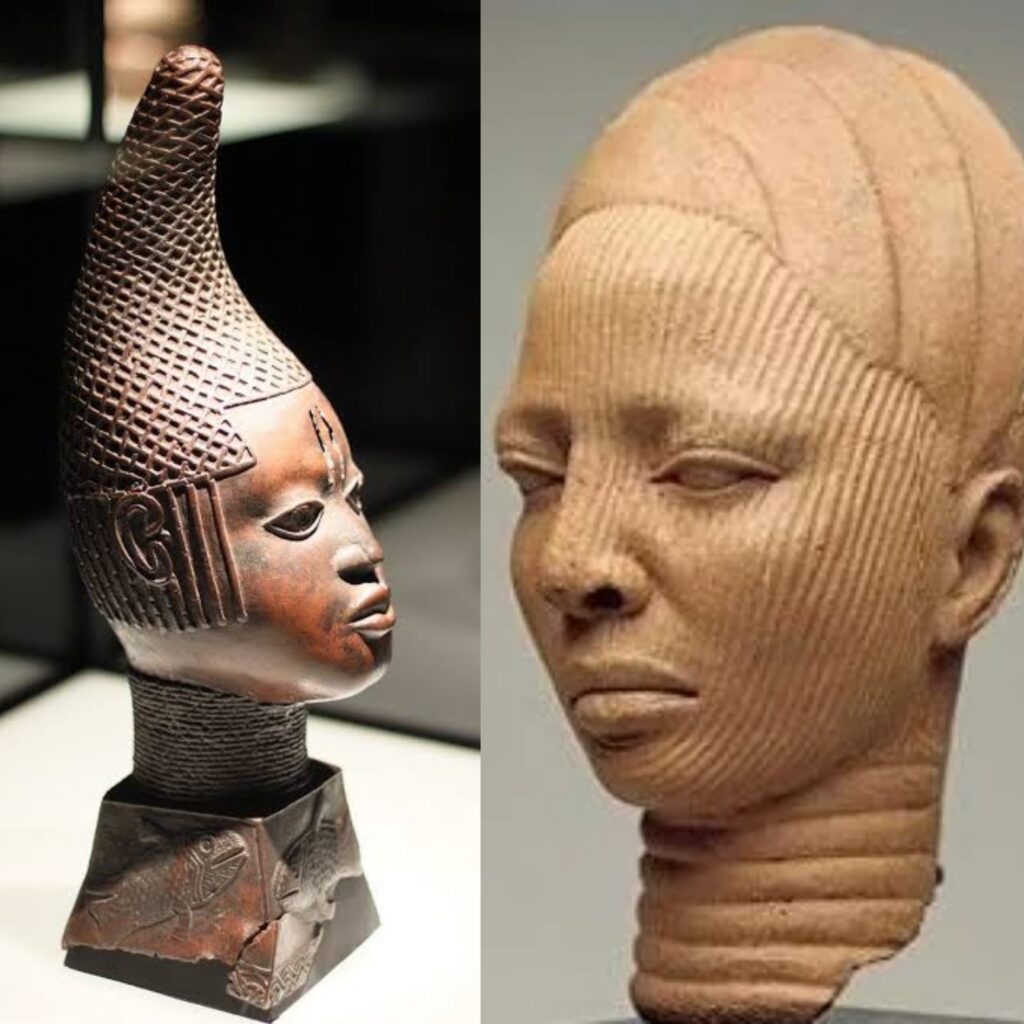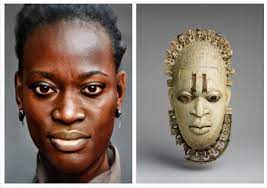No doubt, women’s role in ensuring socio-economic development in society cannot be overemphasized. In the earliest centuries, when the earth was just making shapes and ethnicities and states were just created, women have always fought their way to the top, and, many women in the past have past records of successes that cannot be forgotten in history.
However, despite the clouds of injustice hovering over their heads, women, since inception, have continued to advocate for their rights and for the need to end societal injustice. They have also continued to clamour for equal opportunities in society, having in mind their roles as mothers.
One such record is that of Queen Idia, who, according to history, is described as a warrior whose magical powers sustained her community. Queen Idia, also known as Egua-Iy’Oba (The Queen Mother’s Palace), which was built for her in lower Uselu, was the first woman who went to and fought in war.

History
Once upon a time, there was a woman named Queen Idia, who to this day is referred to as Iy’Oba (Queen Mother).
Idia was the mother of the Oba of Benin, Esigie, who ruled from 1504 to 1550. She was described as a formidable warrior who fought tenaciously before and during her son’s rule as the oba (king) of the Edo people, and she played a vital role in his ascent and reign.
Following the passing of his father, Oba Ozolua, Esigie’s father, Queen Idia played a key role in acquiring the title of oba for Esigie. This was because, the 15th King of Benin had more than one wife and children, who were expected to take over the throne after his death, but Idia fought her way through to ensure that Esigie’s son became king.
Esigie was the son of Idia, the second wife, whereas Arhuaran was the first son of the first wife. According to tradition, the Oba would be the first son. But despite the fact that it was practically impossible at the time, Idia raised Esigie from infancy to be the next in line for the throne.
Arhuaran was a smart, analytical youngster. While Esigie stayed at home, clinging to the knowledge and lessons from his mother, he was taken to Portugal at a young age to acquire training and learn more about the customs of white men. People in the palace could hardly recognize Arhuaran when he returned from Portugal since he was a giant’s height.
Esigie, who was enormous and had a fierce appearance, had developed into a master of his father’s court. He was well-known to the throne due to his expertise in sorcery, his love of food, and his connections with the army of the Oba and the royal guards.
In order to accomplish this, she organized an army to confront her step-son Arhuaran, who was ultimately victorious. Esigie eventually succeeded as Benin’s 17th oba. Arhuaran, however, became the ruler of Udo, a community about 20 miles away from Benin.
Queen Idia assisted her son in defeating his foes by utilizing both her magical abilities and her medical expertise. She was one of the most well-known female soldiers from the Kingdom of Benin ever. She was a courageous army general who commanded the Benin Armies to multiple victories. One of these was the Idah War (1515–1516 A.D.), in which her army triumphed thanks to their valiant fighting. In certain villages, she also served as the Oba’s agent.
During her son’s rulership, she enjoyed being in charge of deciding who to go to war with and the strategies to be used to win wars. In addition, at the time, no one could intimidate her because she was a woman and the Queen Mother, but rather, everyone respected her for the power she exhibited and she helped her community win wars. For instance, Queen Idia enjoyed the privilege of recommending her choice of chiefs to the Oba, who conferred the title on them thereafter.
Along with Eguae-Iyoba, Esigie bestowed the title of “iyoba” (queen mother) on his mother (Palace of the Queen Mother). And this name, to date, is still known among the Benin people.
One of the prominent wars fought by Queen Idia was the war between the Kingdom of Benin and the Igala people. She was said to have used her magical powers to defeat the Igala army when they came at them.
To seize control of Benin’s northern regions, the nearby Igala people dispatched warriors over the Benue River. Esigie defeated the Igala, restoring the kingdom’s cohesion and military might. The majority of the credit for these wins was given to his mother, Idia, whose political advice, in addition to her magical abilities and medical expertise, was seen as essential components of Esigie’s success on the battlefield.
Another famous war won by Idia was in 1515, when she helped her son in the battle when she pretended and dressed as a man, which if not for her, he might not have been successful.

Legacy
The usage of symbolic artwork associated with Queen Idia suggests that she had early contact with the Portuguese, and the piece has grown to be one of the most well-known in all of black history. The Bronze ancient Queen-Mother Head, the Bronze Bells, the traditional Sword also known as “Eben”; the carved wood rattle staff called “Ukhurhe,” and many more are examples of such works of art.
The representation of Queen Idia is the well-known Festac Head that was used to commemorate the 1977 Nigerian FESTAC – Festival of Arts and Culture, which was attended by leaders from around the globe. Also, Queen Idia’s tomb is located at Egua-Iy’oba, Uselu, Lagos Road, Benin-City.





